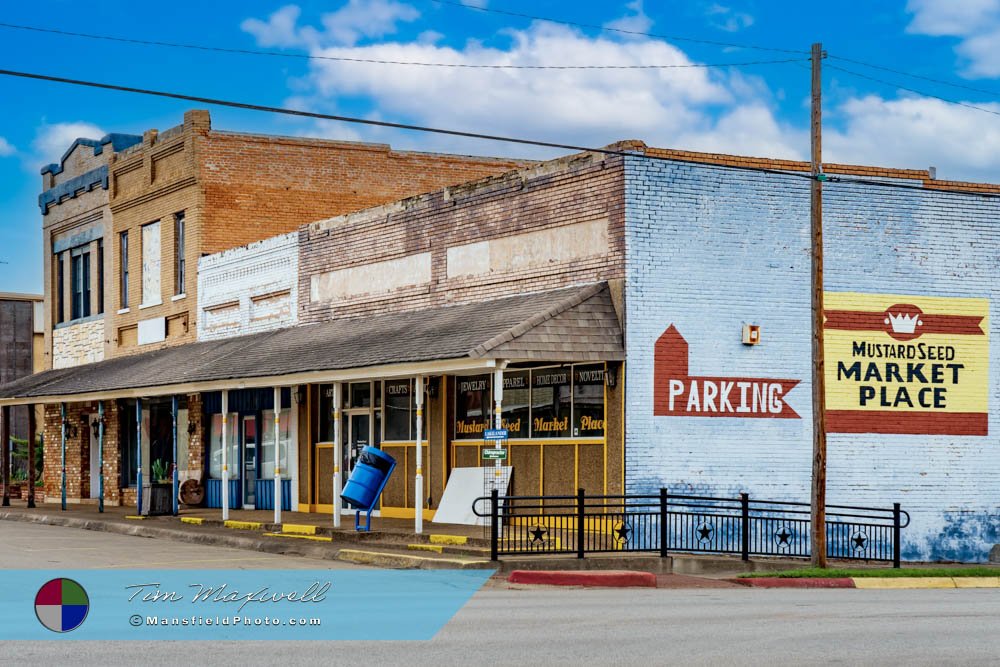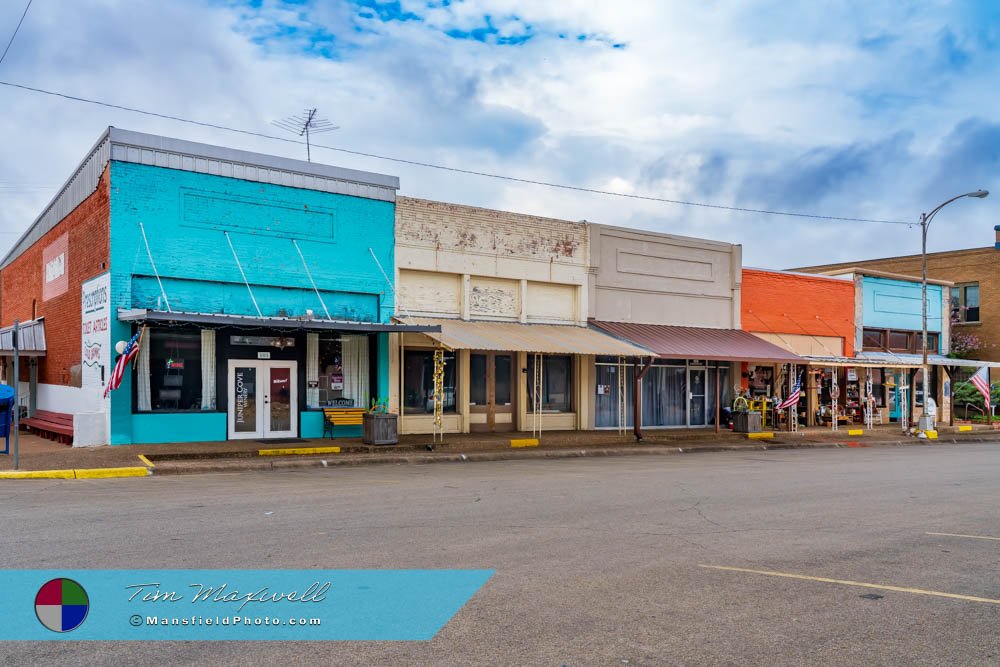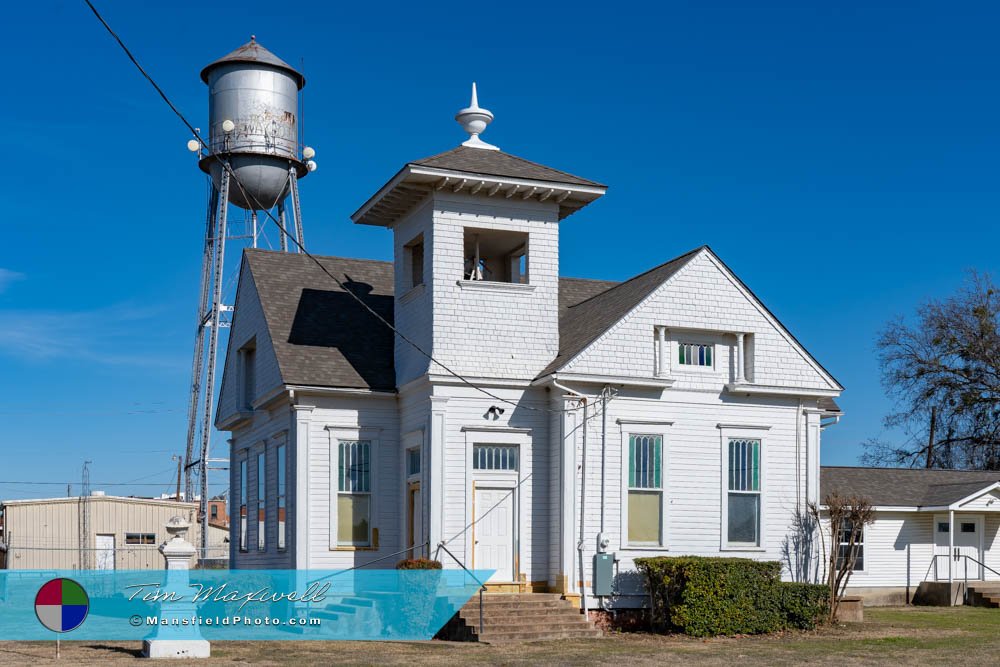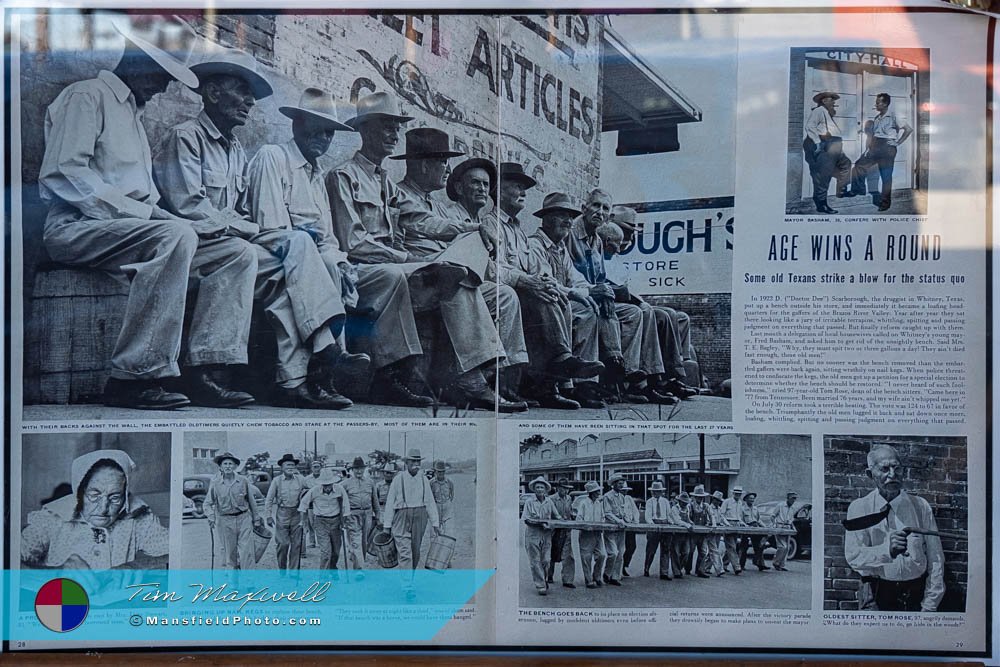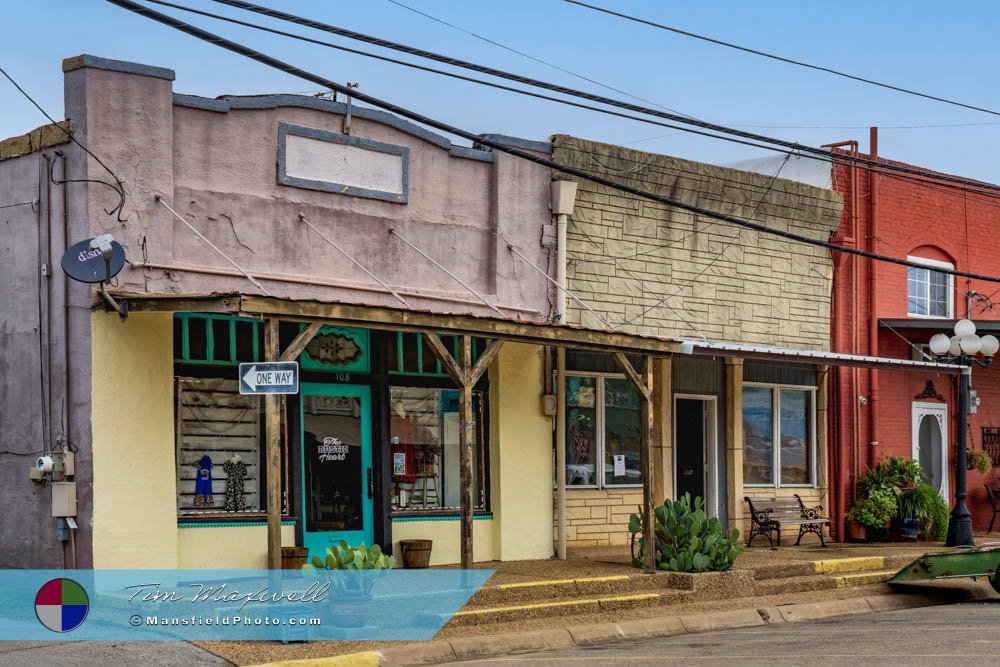Mansfield Photography
Whitney, Texas
– And the Bench Wars.
Whitney, Texas, is named after Charles A. Whitney, the chief engineer of the Houston and Texas Central Railway. When the railroad was extended through Hill County in the late 19th century, the small town that emerged was named in his honor. The railroad played a vital role in the town’s development, creating a crucial connection for trade and growth.
Early Settlement and Founding
The town was officially founded in 1876, with the construction of the Houston and Texas Central Railway through the area. While the region had already attracted a few settlers before the town was established, it was the railroad that catalyzed the town’s growth. The town’s early economy revolved around agriculture, with cotton farming being a dominant industry, supplemented by cattle ranching.
The fertile land and proximity to the railway made Whitney a hub for trading agricultural products, and it wasn’t long before the town started to grow. As more people moved in, businesses sprung up to support the population, and Whitney became a vital part of the Hill County economy.
Historic Downtown Whitney
The downtown area reflects its rich history, with many buildings dating back to the late 19th and early 20th centuries.
The town square is the heart of Whitney, where small businesses, antique shops, and local restaurants bring a unique charm to the area. The historic buildings, some of which retain their original architectural features, make the downtown area a popular spot for both locals and visitors.
While small in size, downtown is a bustling center for community life, where residents gather for local events, shopping, and socializing. The town has successfully preserved much of its historical charm, and walking through the downtown area gives you a glimpse into its storied past.
Interesting Facts
Early Economy: In its early years, the town was known for its cotton gins, which processed the cotton from surrounding farms. By the early 20th century, the town had several gins operating, solidifying its place as an agricultural hub.
Lake Whitney: The creation of Lake Whitney in 1951 transformed the area and boosted the local economy by attracting tourists. The lake covers over 23,500 acres and offers recreational activities like fishing, boating, camping, and swimming. It’s one of the most popular lakes in Texas and brings thousands of visitors to the town each year.
The Battle of the Benches
In 1922, D. Scarborough, a local druggist, placed a cedar bench in downtown for elderly men to sit, whittle, and discuss the news of the day. By 1949, some local women asked Mayor Fred Basham to remove the bench due to complaints about the men’s spitting and language.
The Mayor complied, moving the bench to a nearby alley, but the “spit and whittlers” were outraged. They brought nail kegs to sit on at the original spot, only for the city to remove them. The elderly men presented a petition, and a special election was held in August 1949, where they won by a vote of 124 to 67.
The victory became a landmark event, with Mayor Basham announcing the results while standing on a nail keg. New benches were placed at the original site on Brazos Street, along with a water fountain, and the benches were later refurbished. The “Battle of the Benches” garnered national attention, including a feature in Life magazine, and helped put Whitney on the map. Today, visitors can sit on the historic benches, where the town’s spirited past is still felt.
Whitney Today: A Town Embracing its Past and Future
Today, Whitney is a thriving community of around 2,100 residents, combining a deep sense of history with the natural beauty of Lake Whitney. The lake has become a significant draw for both residents and tourists, offering year-round recreation and scenic views. Many of the residents live in the areas surrounding the lake, contributing to Whitney’s growth as both a small town and a lakeside community.
The town’s economy has shifted over time, with tourism playing an increasingly important role. Businesses in the downtown area cater to both locals and visitors, offering everything from unique antiques to cozy cafes. Events like the Lake Whitney Arts Festival and local farmers’ markets keep the community engaged and add to the town’s vibrant atmosphere.
Whitney also has several schools, a public library, and a range of services that make it a comfortable place to live. Despite its small size, the town is well-connected to larger cities like Waco and Fort Worth, making it an attractive place for those who want a peaceful lifestyle without sacrificing access to urban amenities.
📸 Want to See More Photos of This Town?
Conclusion: Whitney’s Unique Blend of History and Nature
Whitney, Texas, stands as a town that successfully blends its rich history with the beauty of its natural surroundings. From its early days as a farming community tied to the railroad, to its modern identity as a lakeside retreat, Whitney continues to evolve while maintaining its small-town charm. The historic downtown area, along with the attractions of Lake Whitney, ensure that both history enthusiasts and outdoor lovers will find plenty to explore in this unique corner of Hill County. Whether you’re visiting for a weekend or considering making it your home, Whitney offers a warm welcome and a captivating glimpse into the past and future.

